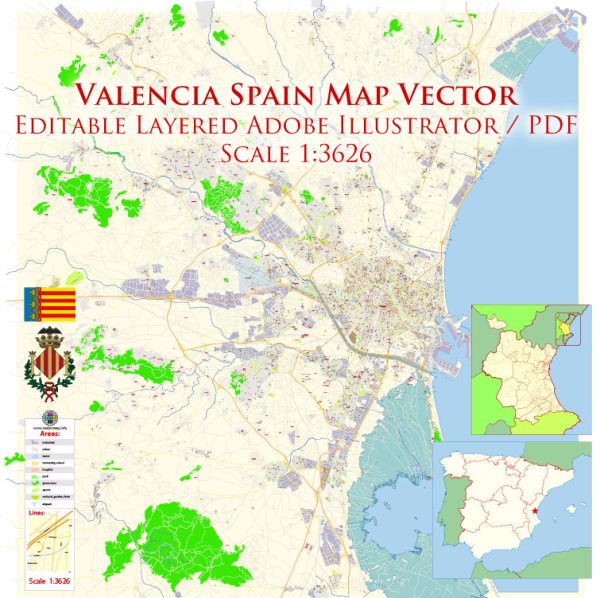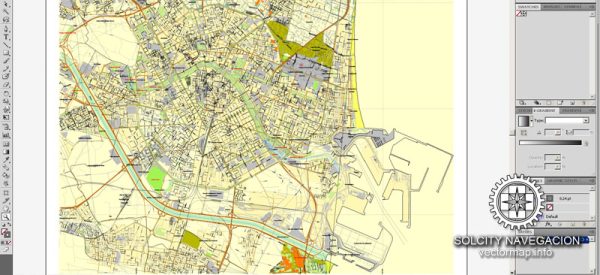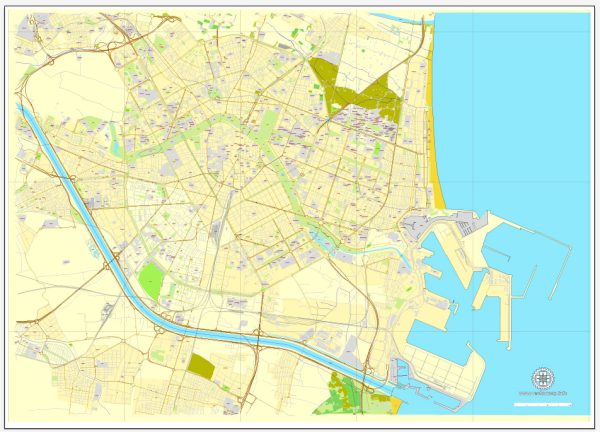Valencia, a vibrant and historic city on the eastern coast of Spain, has seen significant urban development and transformation in recent decades. The city has been at the forefront of urban planning and architecture, combining modernity with its rich historical and cultural heritage. Here’s a description of Valencia’s urban development:
- Modern Architecture: Valencia is known for its stunning modern architecture. The City of Arts and Sciences (Ciudad de las Artes y las Ciencias) is a prime example of contemporary urban development. Designed by renowned architect Santiago Calatrava and Félix Candela, it consists of futuristic buildings housing a science museum, opera house, planetarium, and an aquarium. The complex is a symbol of Valencia’s commitment to modern design.
- Green Spaces and Parks: Valencia has made a concerted effort to create green spaces within the city. The Turia Gardens (Jardín del Turia) is a remarkable example. It’s a former riverbed turned into a long, lush park that stretches through the heart of the city. The park features walking and cycling paths, playgrounds, and numerous sports facilities.
- Rejuvenated Old Town: Valencia’s historic old town (Ciutat Vella) has undergone extensive restoration and revitalization. The restoration projects have preserved the city’s medieval and Renaissance architecture while adding modern amenities, making it an attractive area for residents and tourists.
- Sustainable Transportation: Valencia has invested in sustainable transportation infrastructure. The city’s extensive network of bike lanes, along with public transportation options such as trams and buses, has improved mobility and reduced reliance on private cars. Additionally, the city promotes walking, making it pedestrian-friendly.
- Urban Beach Development: The city’s beaches, particularly the Malvarrosa and El Cabanyal, have seen significant development. Modern beachfront promenades with restaurants, shops, and recreational facilities have enhanced the coastal experience.
- Cultural and Entertainment Hubs: Valencia is renowned for its cultural and entertainment districts, such as Ruzafa and El Carmen. These areas feature a vibrant nightlife, art galleries, theaters, and a variety of restaurants and bars, making them popular with both locals and visitors.
- Educational and Research Centers: Valencia has established itself as an educational and research hub with the presence of institutions like the University of Valencia and Polytechnic University of Valencia. These institutions have contributed to the city’s intellectual and technological advancement.
- Sustainable Initiatives: Valencia is committed to sustainability and environmental preservation. The city has implemented green initiatives, including energy-efficient buildings, waste management programs, and green spaces. The Valencia Bioparc, a zoo focusing on conservation and naturalistic habitats, is another example of the city’s commitment to environmental sustainability.
- Festivals and Events: The city’s urban development caters to its vibrant culture and traditions. Valencia is renowned for its festivals, with Fallas being one of the most famous. The city’s streets come alive with artistic sculptures, fireworks, and music during this annual celebration.
Overall, Valencia’s urban development is a testament to the city’s ability to combine its rich history with modernity, resulting in a dynamic, attractive, and sustainable urban environment. The city has made considerable progress in preserving its heritage while adapting to the needs of a modern metropolis.




 Author: Kirill Shrayber, Ph.D.
Author: Kirill Shrayber, Ph.D.